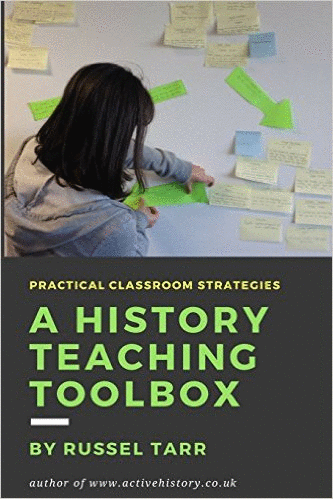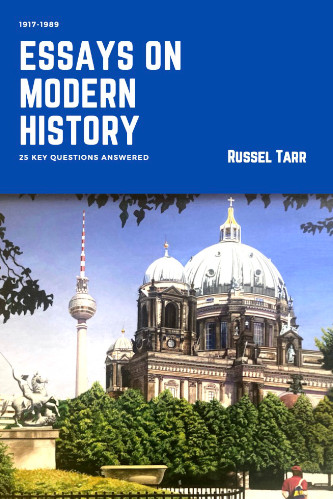IB History: ActiveHistory
An ActiveHistory subscription provides everything you need to construct and deliver a two-year IBDP History course from start to finish using the ActiveHistory IB History Hub.
These consist not just of lesson plans, worksheets and teacher notes, but also multimedia lectures and interactive games and historical simulations ideal for remote learning and self-study.
Use the ActiveHistory curriculum maps and the ActiveHistory syllabus topics to design your own course effectively.
We also have you covered for the Internal Assessment, Extended Essay and Theory of Knowledge in History, not to mention Essay and Sourcework Skills, IBDP History Model Essays and IBDP History Sample Sourcework Exercises / Model answers!
SUBSCRIBE NOW REQUEST A FREE TRIAL
 Rule of 20th Century Dictators: Comparative Study Unit
Rule of 20th Century Dictators: Comparative Study Unit
The IB History examination encourages students to analyse not just the rule of individual dictators, but to compare them across different regions. This unit provides a rigorous, engaging and efficient way of doing so - firstly by considering one ruler, then comparing him to a second. It is designed to accompany the comparative study unit on the rise of dictators, with a further depth study on the Rise of Castro.
Stage 1: Focus on ONE ruler
Note: This plan uses Fidel Castro's regime in Cuba as the example, but it works for any ruler that you care to study.
1. How do historians measure the ‘success’ of a regime?
- In this phase of the investigation, students will consider carefully how historians can empirically measure the ‘success’ of a regime. They will do this firstly from a general democratic perspective, and then adapt and refine their criteria by considering dictatorships in general, and left-wing dictatorships in particular.
- It is assumed that students have an understanding of the basic differences between left- and right-wing ideology is assumed to get the most out of this unit.
Focus points
- With what degree of success did Castro deal with the problems he faced?
- Was Castro a totalitarian ruler?
- Compare and contrast the rule of Castro with another other dictator from a different region.
a. How do we measure ‘success’ in a general sense, from a modern democratic perspective?
Begin by discussing with the class how we might measure whether a present-day democratic government is a ‘success’.
For each point raised, ensure that it is measurable.
- For example, stating ‘weak opposition movements’ should be met with the question “And how do we determine that they are weak?”. This in turn can lead to further clarification, such as “Small membership / No attempted coups against the regime / Few political trials or prisoners”.
- Similarly, “A strong economy” needs breaking down in terms of what criteria are used to measure this: for example, students might identify such things as low unemployment, a good balance of trade, few strikes”.
|
Some ideas about how we can measure ‘success’ (from a straightforward democratic perspective) |
Economy |
Low unemployment | Few strikes | Low inflation | Good balance of trade | Growth in real wages | |
Society |
High birth rate | Increasing life expectation | High literacy rates | Civil rights promoted (how?) | Sexual equality promoted (how?) | Forges a strong national identity |
Culture |
Free press | Regime works constructively with the church | Propaganda highlights positive achievements rather then demonises perceived opponents |
Politics |
No mass demonstrations against the regime | No political trials / prisoners | Free, fair, regular elections | Parliament has real power to hold government to account |
NOTE: some research on the Human Development Index might provide useful avenues of enquiry; you could even get the Geography students / teacher(s) to teach the historians how to approach their investigation.
b. How does the measure of ‘success’ change when we consider this dictatorship rather than a democracy?
- The list which should now be developed is a great starting point for measuring the success of a democratic regime. But now go back through the list adapting it to provide a measurement of ‘success’ for the dictatorship in question.
- Many of the criteria will remain unchanged: a dictatorship will still want low unemployment, for example.
However, other measurements will not be applicable – for example, a dictatorship will want to destroy genuine Parliamentary power rather than preserve or enhance it.
- Other measurements will depend upon the particular ideology of the dictatorship in question: for example, a left-wing dictatorship would measure its success with women by increasing their employment rates/opportunities, whereas a right-wing dictatorship would focus more on providing them with incentives to stay at home and devote themselves to the family. Similarly, a left-wing government will regard nationalisation of industry as a sign of success, whereas a right-wing government will support privatisation.
2. Based on our findings, how successful was Castro as ruler of Cuba?
a. Research / Presentation phase
- The criteria now identified should now be categorised, then converted into questions that can be shared between the students in the class to research further (“Was Castro successful in improving literacy rates in Cuba?”).
- Students should be given the time and resources to find the answers to their questions, then report back to the class with their findings. Encourage students in the research phase to beware of simplistic answers: a sophisticated historical answer often starts with ‘it depends…’ (for example, short- versus long-term, town versus countryside, and so on).
- TIP: Instead of straightforward presentations, the exercise could be set up with more experienced students as a debate, or an arbitration exercise.
b. Essay writing phase
- The students are now in a strong position to write their essay, making use of the essay-marking rubric and the online video documentary.
- Beyond this, they should make use of the following prompt to help them ensure that they have sufficient content coverage. There is the Castro’s Cuba: online keyword checker that they can use to quickly test whether their essays miss out anything important.
POLITICAL |
ECONOMIC |
SOCIAL |
- Forced resignations from the cabinet of Urrutia, Lanz |
- Agrarian Reform Acts |
- CTC |
Extension / Revision task: Was Castro a totalitarian ruler?
A useful exercise is to conduct a matrix assessment of Castro. Divide the board with a horizontal and a vertical line to create four squares:

- Students then decide what evidence can be placed in different parts of the diagram. They may for example decide that the 10-million ton sugar crop initiative was totalitarian, but a failure (top right), but that other policies belong elsewhere.
- The completed diagram can be a very valuable essay planning resource since it provides a path through two essay titles.
Stage 2: Comparing to a SECOND ruler
Directly following the completion of the in-depth case study of one rule, or after a suitable interval later in the course, students should proceed to compare and contrast two separate dictators from different regions.
To do this, they should base their investigation around the ActiveHistory interactive simulation “Which 20th Century Dictator are YOU?”. This is a stand-alone simulation to help students compare and contrast how single-party state rulers maintained power. It guides students through 10 key issues explaining how and why dictatorships are able to survive. Students complete the accompanying self-study workpack to turn their findings into a rigorous essay. It also provides a great way of revising and developing their earlier essay focusing on one dictator.

© 1998-2024 Russel Tarr, ActiveHistory.co.uk Limited (Reg. 6111680)
1 Torrin Drive, Shrewsbury, Shropshire, SY3 6AW, England
All rights reserved | Privacy Policy | Contact







